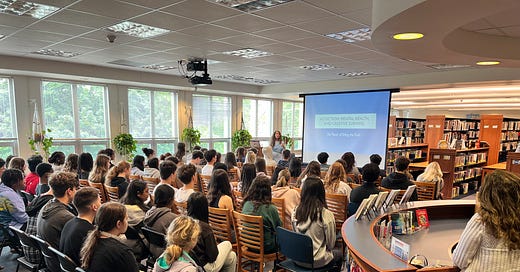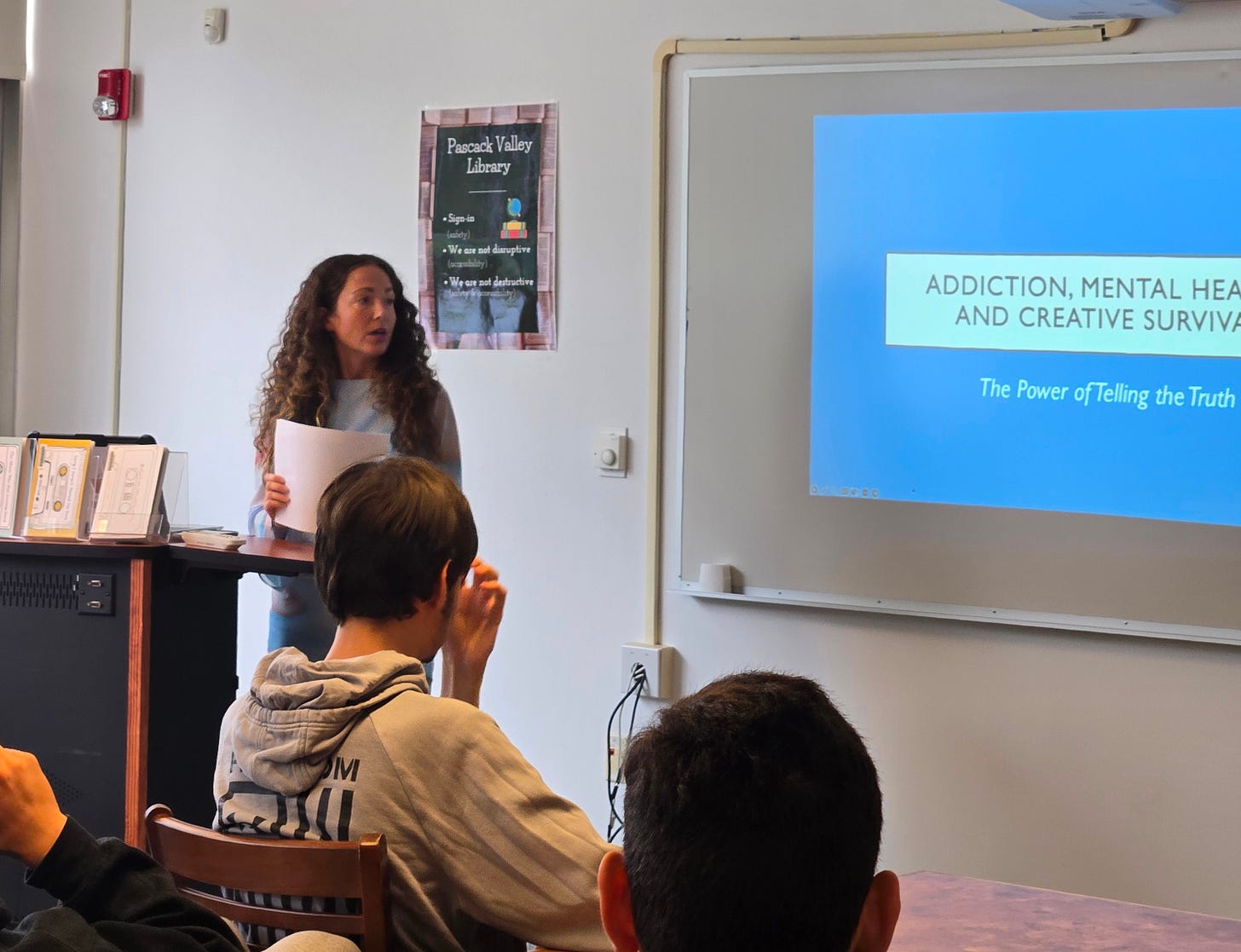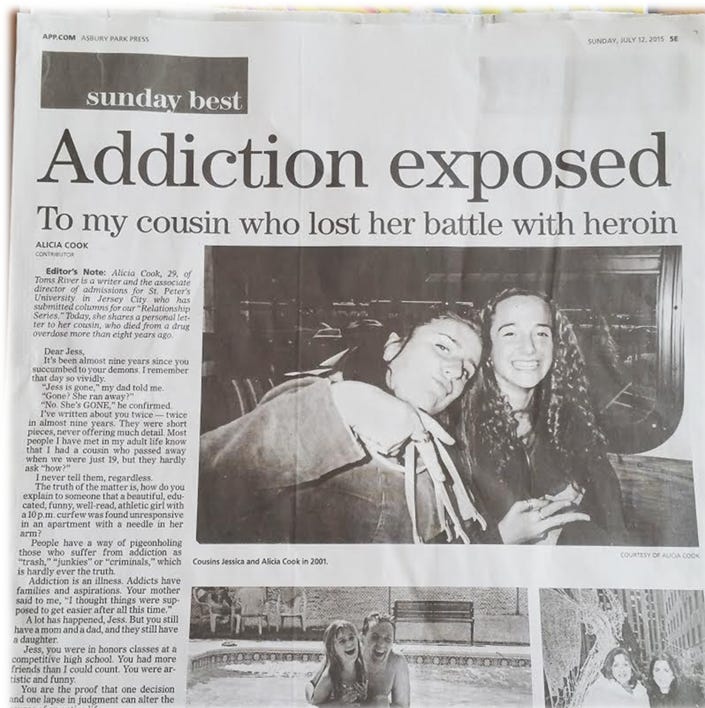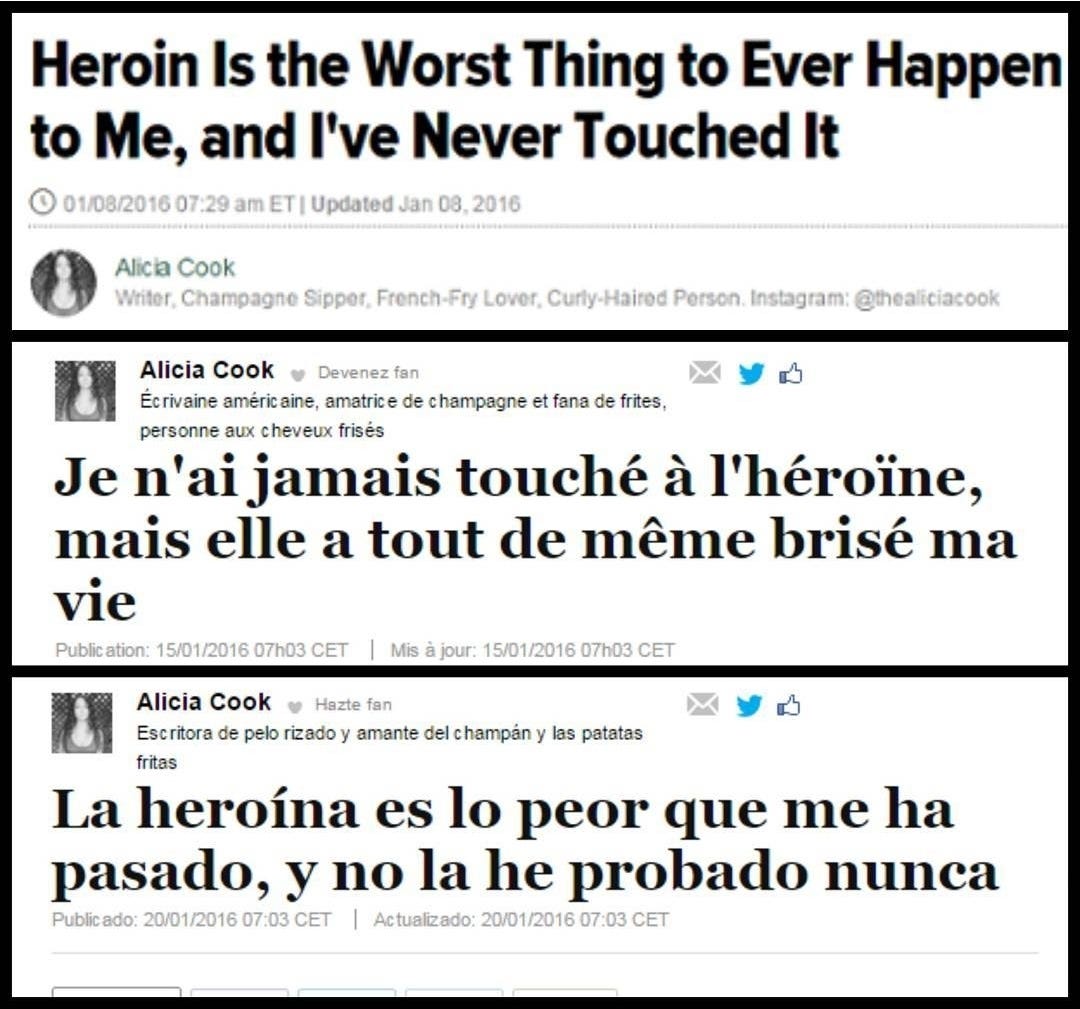On May 29, I had the chance to speak at two assemblies—one at Pascack Hills and one at Pascack Valley High School in New Jersey. My presentation was titled Addiction, Mental Health, and Creative Survival: The Power of Telling the Truth.
I talked to students about addiction (of all kinds), mental health, and how important it is to find healthy ways to cope. This was the first time I ever presented on all of these topics at once, in this format. Throughout the presentation, I paused to read some of my poetry, which allowed for moments to breathe, reflect, and show how creative expression has helped me make sense of things I couldn’t always explain.
I shared what I’ve learned through my own life, loss, and work: that if you’re feeling lost, sad, angry, betrayed—whatever it is—you can move through it. You can ask for help. You can start over. You can create something from it. Art, in any form, can be a way forward. It can help you make sense of what you’re feeling and connect you with others who are going through a similar experience. It can help the person behind you. It can remind you that you’re not alone.
While preparing for this presentation, I took some time to reflect on the work I’ve done over the past 13 years, and I saw, maybe more clearly than ever, that this is what I’ve always been doing in my writing. In both my poetry and my essays on addiction, I was finding ways to cope, to connect, and to make sense of the things that felt too big to keep crammed inside my brain and heart.
My essay series on addiction was a clear attempt to reach others who were impacted, particularly the loved ones who are often left feeling helpless and invisible. It was about telling the truth and breaking the silence and stigma around something that has touched so many lives, including my own.
And a lot of what drove the creation of Stuff I’ve Been Feeling Lately came from that same place. I was trying to find a way to turn pain, grief, confusion, and anger into something that could hold me up instead of break me down.
All that to say, I’ve come to realize that when you create honestly about difficult/sensitive things, sometimes the words give someone else the language they didn’t have. Sometimes, they offer comfort, validation, or just a reminder that they’re not alone. Sometimes, your art can help someone else survive the night and make it to the next day.
The work might evolve, but the mission stays the same:
Break stigma.
Normalize difficult conversations.
Honor the dead.
Offer the living a reason to stay.
Inspire others.
That’s the power of art—it doesn’t have to fix everything, and it won’t. But it can create space to feel, to heal, and to begin again. This idea isn’t new, but it’s powerful. Creativity can be a means of survival. And I am so happy that I was able to have a comprehensive discussion about all of this with teens.
These aren’t easy topics, but they’re real ones. And they affect more people than we think, especially young people. I want to thank both schools for inviting me during Mental Health Awareness Month.









